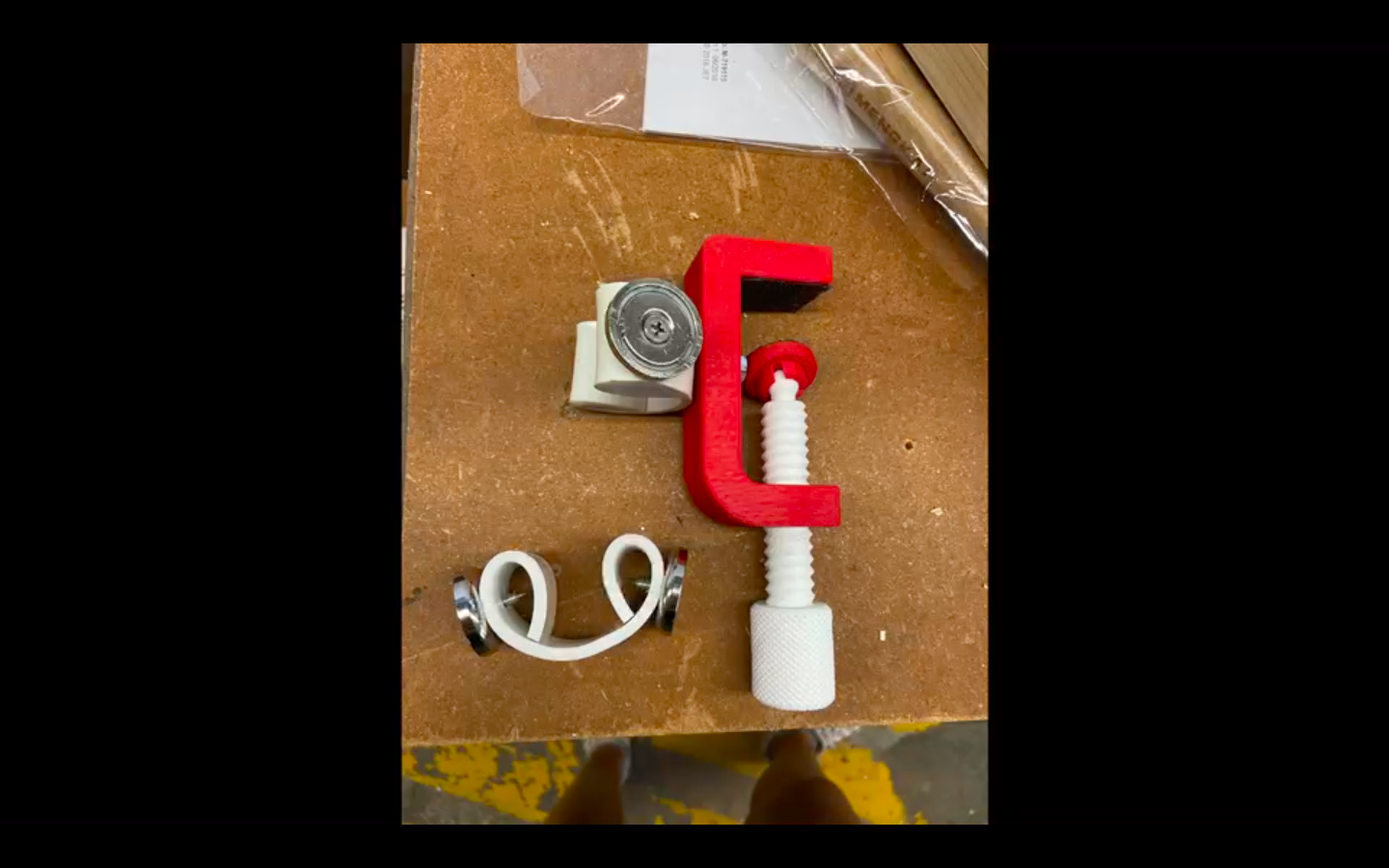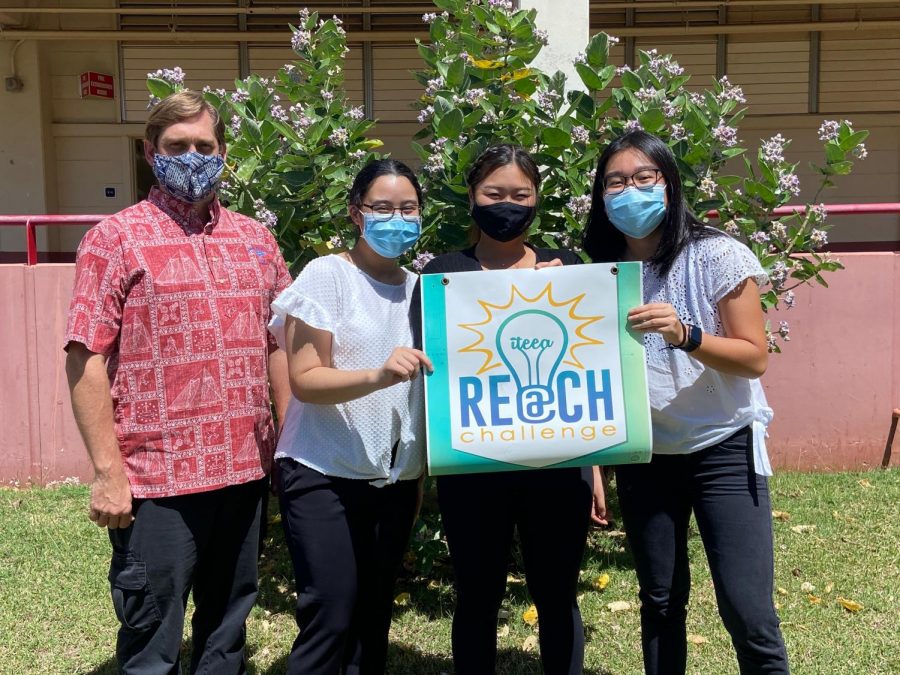Kalani Engineers Win 2nd Place While Helping Student with Cerebral Palsy
Kalani students Taylor Pimenta, Keili Takamiya, and Esther Wong stand next to their teacher, Mr. Silver, with a poster for the REACH Challenge. Photo courtesy of Taylor Pimenta.
April 12, 2021
On Wednesday, Feb. 24, Kalani’s health academy students Esther Wong (12), Keili Takamiya (12), and Taylor Pimeita (12) won second place in the 2020 ITEEA REACH Challenge.
The REACH challenge is a national STEM competition where students design and create adaptive and assistive technology. According to the program’s website, the purpose is for students to “reach” out to members of their community to resolve a challenge that they face. After students build the device and test it with their client, who is typically an individual from the community, the team’s work is submitted for judging in the form of a written report and video that showcases the process.
Not certain where to begin, Kalani’s engineering teacher, Mr. Silver, introduced the girls to a student at Kalani who has cerebral palsy. Cerebral Palsy is a disorder that affects a person’s ability to move and maintain balance and posture. Over half the individuals with this disorder can walk on their own; however, this individual uses crutches as cerebral palsy affects her legs.
When sitting, she rests her crutches against a table, and most times, they collapse. This makes it a safety hazard for both her and the people around her. This was a challenge she faced daily, so Kalani’s all-female health academy team knew what they had to do.
“We tried our best to design the device to be the most efficient for her to avoid making it an additional challenge she has to face in order to solve another one,” Taylor Pimeita expressed. “An example of making it personalized is by attaching magnets so the crutches connect easily as she only has to place them near each other and they attract on their own. Without this, the original design would have required a lot more strength to push the crutches in and pulling them out of the ‘crutch connector’ part of the device.”

These ladies faced struggles that forced them to rethink their design choices such as the type of material for certain parts and making the device functional for different tables. These struggles were quickly overcome as they went through trial and error, pros and cons, on what would be most successful for their client.
“We all learned of the news in an email from the engineering teacher, Mr. Silver, which said ‘CONGRATULATIONS’ in the email title, and below it said we got 2nd place,” said Pimenta. “My first reaction was ‘Did I read this wrong?’ I didn’t think we would place in this competition as none of us had experience in the engineering field and we were competing against students who are more advanced.”
Pimenta reread the email multiple times to confirm she had read it correctly.
“I was so proud of my group and how far we’ve come,” she said. “I was also very grateful for my teachers for pushing us to step out of our comfort zone and always supporting us throughout the journey.”



